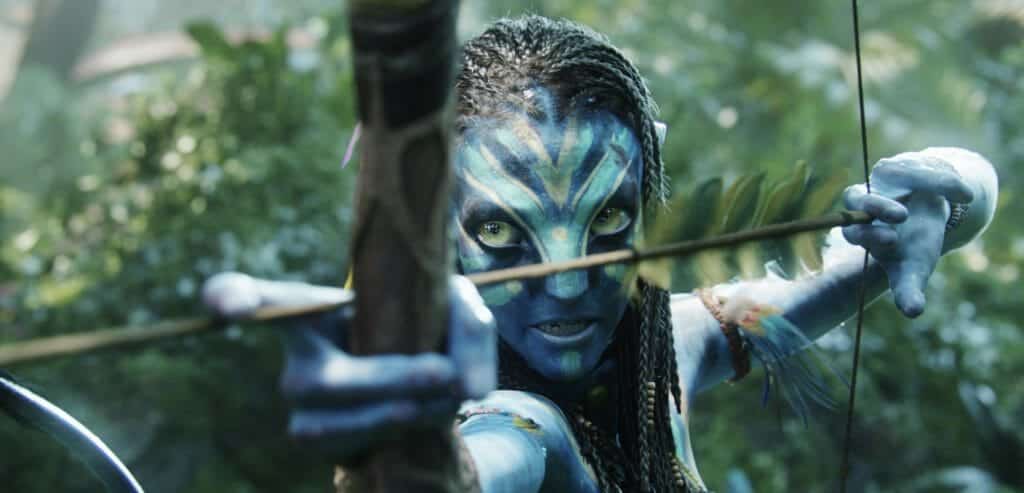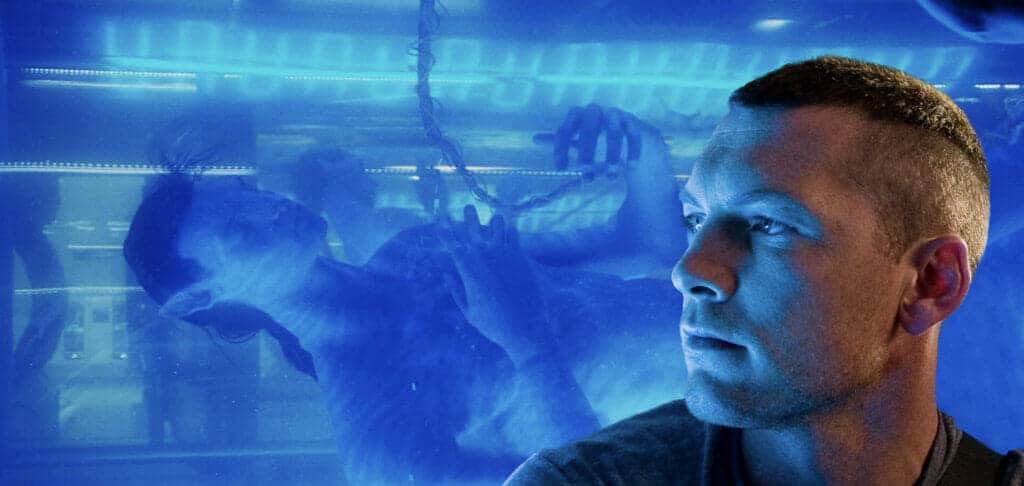‘Avatar.’ Released way back in 2009. Full of blue people. And loads of cool floaty-glowing animals. Oh, and, lest we forget, an inordinate amount of white savourism. It turns out that James Cameron of Titanic fame’s “magnum opus” didn’t direct your average joe, the highest-grossing movie of all time. But instead, a deeply, deeply problematic film. And really, it’s time we talked about it – at least again.
In case you missed it, which, I mean, fair enough, the original did come out 13 years ago, ‘Avatar’ has just been re-released in cinemas. (And taken off Disney+, which is, frankly, just unfair.) All in anticipation of the sequel’s release, ‘Avatar: The Way of Water,’ in December. I mention this because I think there’s never been a better time to discuss the first ‘Avatar.’ Including, and not limited to, its’ distinct imperial agenda. The sinister way it navigates indigenous culture. And its’ idolization of whiteness.
The Curse of White Savourism
The white savior narrative that pervades ‘Avatar’, though perhaps missed on the first watch, is not so easily lost again upon re-watch.
First and foremost, it’s a film centered on Jake Sully (Sam Worthington) – an ex-military white man. A (very) notable choice given that ‘Avatar’ literally takes place on an alien planet that’s being colonized by a horde of white humans. Like, yes, there are blue people, and yes, they do ride aerial creatures that literally look like dragons. But their perspective isn’t as important as this white man’s. The same one who initially wanted to colonize them too. I should say before he decided that maybe the native people of the moon he’s callously invading for cash are actually deserving of life, too. And worth saving – most definitely by him.

What I’m trying to get at is that Cameron’s film is enamored with a vision of exceptional, healing whiteness. A white savior narrative, if you will. ‘Avatar’ loves the idea that an indigenous population – armed with bows and arrows, but not yet guns or ‘efficient’ weaponry – needs to be saved by an ex-military white man.
And Jake is the man. It’s Jake that bravely rebels against the authority of the human military to aid the Omaticaya – a Na’vi clan. The man who, upon gaining access to the Omaticaya, becomes the best of them all. And who successfully guides the Omaticaya in their war effort against the humans. (FYI: at this point, it’s best that movie-goers simply forget that the Omaticaya people are highly-skilled and introspective warriors. And the ones that train Jake and teach him their culture. It’s just best for everyone involved.)
This blatant white exceptionalism is clearest in the film’s ‘Toruk Makto’ sequence. For the Omaticaya, the Toruk Makto is the most prestigious position a warrior can earn. And it means besting the most ferocious winged beast in Pandora: the Toruk. Importantly, we learn that the title of Toruk Makto has only been bestowed on five people in the whole history of the Omaticaya clan. With the last one being Neytiri’s (Zoe Saldaña) great-great-grandfather. The leader of the Omaticaya clan. And a warrior who united the Na’vi clans of Pandora in a time of great sorrow.

I think you get where I’m going here. You can guess who earns the position of Toruk Makto. None other than our brave, selfless, and truly exceptional hero, Mr. Jake Sully. I do think it’s worth noting here that the moment when Jake actually bests the Toruk is super interesting. Well, I really mean odd.
Mainly because you don’t see the struggle that you’d expect between Jake and this wild beast. Jake simply jumps off his current ride, lands on the Toruk, and the screen immediately cuts to black. The next sequence is Jake riding in on the Toruk before the Omaticaya. It’s jarring. James Cameron seems to assume that the audience understands Jake’s prowess and doesn’t need to be shown it. He essentially takes a huge narrative shortcut because he’s so committed to this model of white exceptionalism. And proceeds with the idea that the audience, of course, naturally abides by it.
In my eyes, the Toruk Makto sequence basically confirms the film’s white savior trajectory. In the world of the movie, it seems only to prove that Jake Sully is the quote-unquote ultimate hero. It tries to remind us that Jake is the one that heroically sacrifices his safety to help the Omaticaya. And that, without him, they would most certainly be dead. I mean, he’s the Toruk Makto. You can’t argue with that. I mean, ‘Avatar’ certainly can’t.

It only makes it worse that, while all this is going on, Jake literally inhabits a Na’vi body. Thanks to the help of some good old-fashioned science, some humans are able to traverse Pandora in Na’vi bodies that they’ve been genetically tied to. Aka, cue the title sequence, and their avatars. So, when Jake manages to infiltrate the Omaticaya, rise to the top of their ranks, and co-opt their culture, he’s doing so in a Na’vi body.
This is deeply indicative. It not only suggests that Jake’s white savorism is somehow justified, he is supposed ‘one’ of the people and acts accordingly, but also that he is, quite literally, their hero.
It’s not really surprising at all that, by the movie’s end, Jake ‘achieves’ nativeness. And casts away his human body so he may fully inhabit his Na’vi form. The film’s final, glaring image is of a white man becoming native – proving that white exceptionalism is (most definitely) real and (most definitely) good. It might be best for me to re-phrase here: Jake is the ultimate hero and the ultimate white savior.
Native Characterisation
The character models of the Na’vi are also, to put it lightly, really not great. The Na’vi are very distinctly othered from the white humans. And not just because they’re blue. More so, because they’re portrayed as animalistic, as near-savage.

The Na’vi growl a lot, bare their teeth, wear next-to-nothing in clothing terms, have long, swishing tails, and are inhumanely tall. I mean, the list goes on. Cameron wants to emphasize that the Na’vi are different. And this isn’t to great effect.
This characterization of the native population only further progresses the savage/civilized binary implied by the white savior narrative. And really heightens the perverse idea that the Na’vi, being ‘uncultured’ or somehow ‘unintelligent’, very much need the level-headedness of a white man. Go figure. It certainly doesn’t help matters that an all-non-white cast plays the Na’vi people. The white savior narrative seems to be acted out in real-time – and racism abounds.
Conclusion(s)
There is a kind of prophetic irony to ‘Avatar.’ While James Cameron does try to highlight the ills of colonialism and portrays the destruction of sacred land well, ‘Avatar’ also manages to endorse the white saviorism so central to colonial narratives.
What it means is that ‘Avatar’ manages only to achieve a horribly imbalanced depiction of colonial defects. The film just purports its support for whiteness. ‘Avatar’ is – all in all – a dangerously deceptive endorsement of the imperial agenda. And needs to be acknowledged as such.














